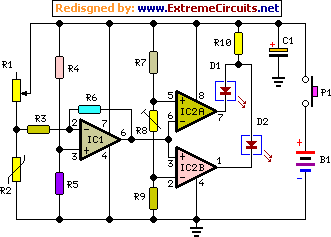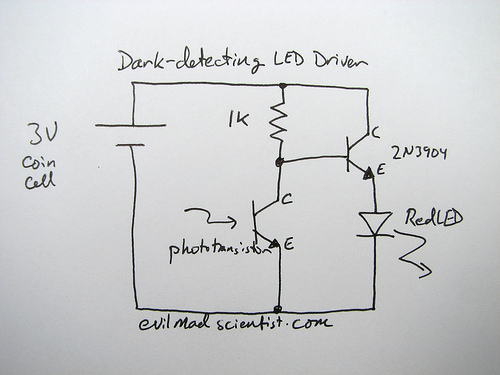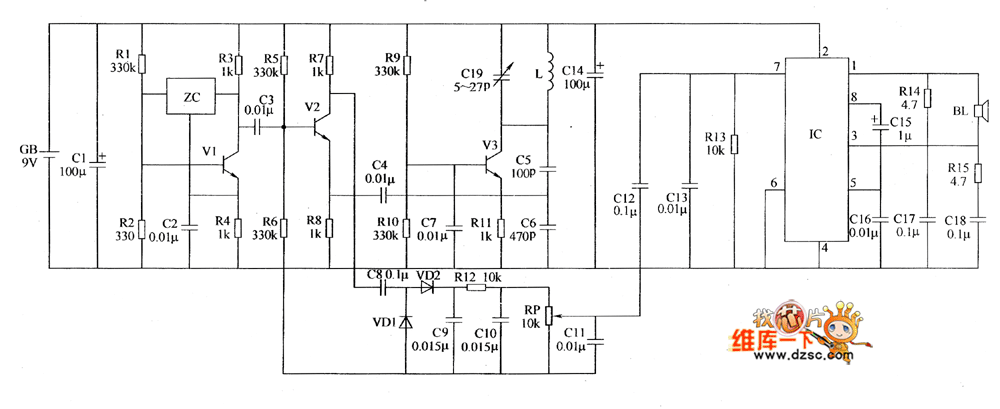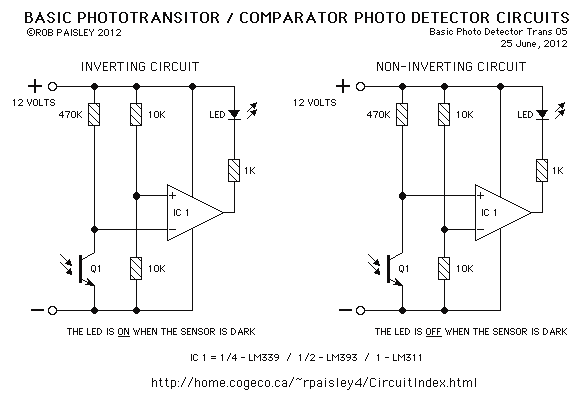
Energy Leak Sensor Detector

Energy Leak Sensor Detector Circuit Diagram. Features: The thermistor value can be selected within the 10K to 22K range at 20°C, allowing for fast detection of energy leaks.
The Energy Leak Sensor Detector Circuit is designed to identify and alert users to potential energy leaks in electrical systems. The core component of this circuit is a thermistor, which is a temperature-sensitive resistor that changes its resistance based on temperature variations. The specified range of 10K to 22K ohms at 20°C provides a balance between sensitivity and stability, ensuring reliable operation across various environmental conditions.
The circuit typically includes a voltage divider configuration where the thermistor is paired with a fixed resistor. This arrangement allows for the measurement of voltage changes that occur when the thermistor's resistance varies due to temperature fluctuations caused by energy leaks. The output voltage from this divider can be fed into a microcontroller or an operational amplifier to process the signal and determine if a leak is present.
Additional components may include a comparator to set a threshold for leak detection, which can trigger an alert or activate a relay to disconnect power in case of a detected leak. A visual indicator, such as an LED, can be incorporated to provide immediate feedback on the operational status of the circuit.
Power supply considerations are crucial, and the circuit may be designed to operate from a low-voltage source, ensuring safety and reducing energy consumption. Overall, the Energy Leak Sensor Detector Circuit is an essential tool for enhancing energy efficiency and preventing potential hazards associated with electrical leaks.Energy Leak Sensor Detector Circuit Diagram. Features: Thermistor value can be chosen in the 10K - 22K @ 20°C range, fast detection of .. 🔗 External reference
The Energy Leak Sensor Detector Circuit is designed to identify and alert users to potential energy leaks in electrical systems. The core component of this circuit is a thermistor, which is a temperature-sensitive resistor that changes its resistance based on temperature variations. The specified range of 10K to 22K ohms at 20°C provides a balance between sensitivity and stability, ensuring reliable operation across various environmental conditions.
The circuit typically includes a voltage divider configuration where the thermistor is paired with a fixed resistor. This arrangement allows for the measurement of voltage changes that occur when the thermistor's resistance varies due to temperature fluctuations caused by energy leaks. The output voltage from this divider can be fed into a microcontroller or an operational amplifier to process the signal and determine if a leak is present.
Additional components may include a comparator to set a threshold for leak detection, which can trigger an alert or activate a relay to disconnect power in case of a detected leak. A visual indicator, such as an LED, can be incorporated to provide immediate feedback on the operational status of the circuit.
Power supply considerations are crucial, and the circuit may be designed to operate from a low-voltage source, ensuring safety and reducing energy consumption. Overall, the Energy Leak Sensor Detector Circuit is an essential tool for enhancing energy efficiency and preventing potential hazards associated with electrical leaks.Energy Leak Sensor Detector Circuit Diagram. Features: Thermistor value can be chosen in the 10K - 22K @ 20°C range, fast detection of .. 🔗 External reference





